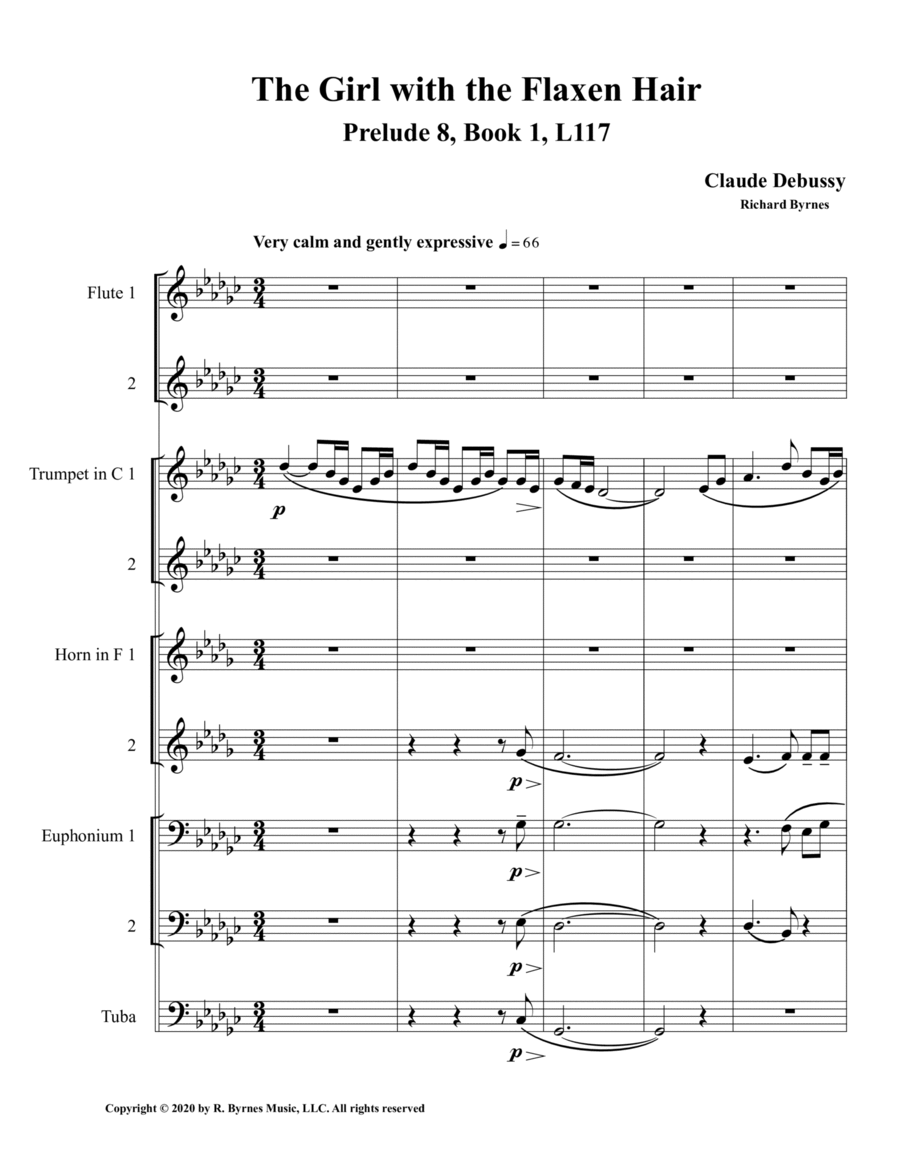C Trumpet,Euphonium,Flute,Horn,Tuba - Digital Download SKU: A0.830692 Composed by Claude Debussy. Arranged by Richard Byrnes. 20th Century. 19 pages. Richard Byrnes #3435181. Published by Richard Byrnes (A0.830692). The Girl with the Flaxen Hair (La fille aux cheveux de lin), the 8th Prelude in Debussy's Preludes, Book 1 is one of the most famous pieces by Claude Debussy. It's tender melodic and harmonic beauty is unrivaled.Please peruse the pages and listen to the recording of the score that is offered to determine whether this arrangement can work for your ensemble.  In addition to many works by J.S. Bach, we offer works by Brahms, Debussy, Dvorák, Fauré, Glazounov, Glinka, Gottschalk, Granados, Griffes, Lotti, Mendelssohn, Mozart, Ravel, Richard Strauss, Turina, & Vierne.
